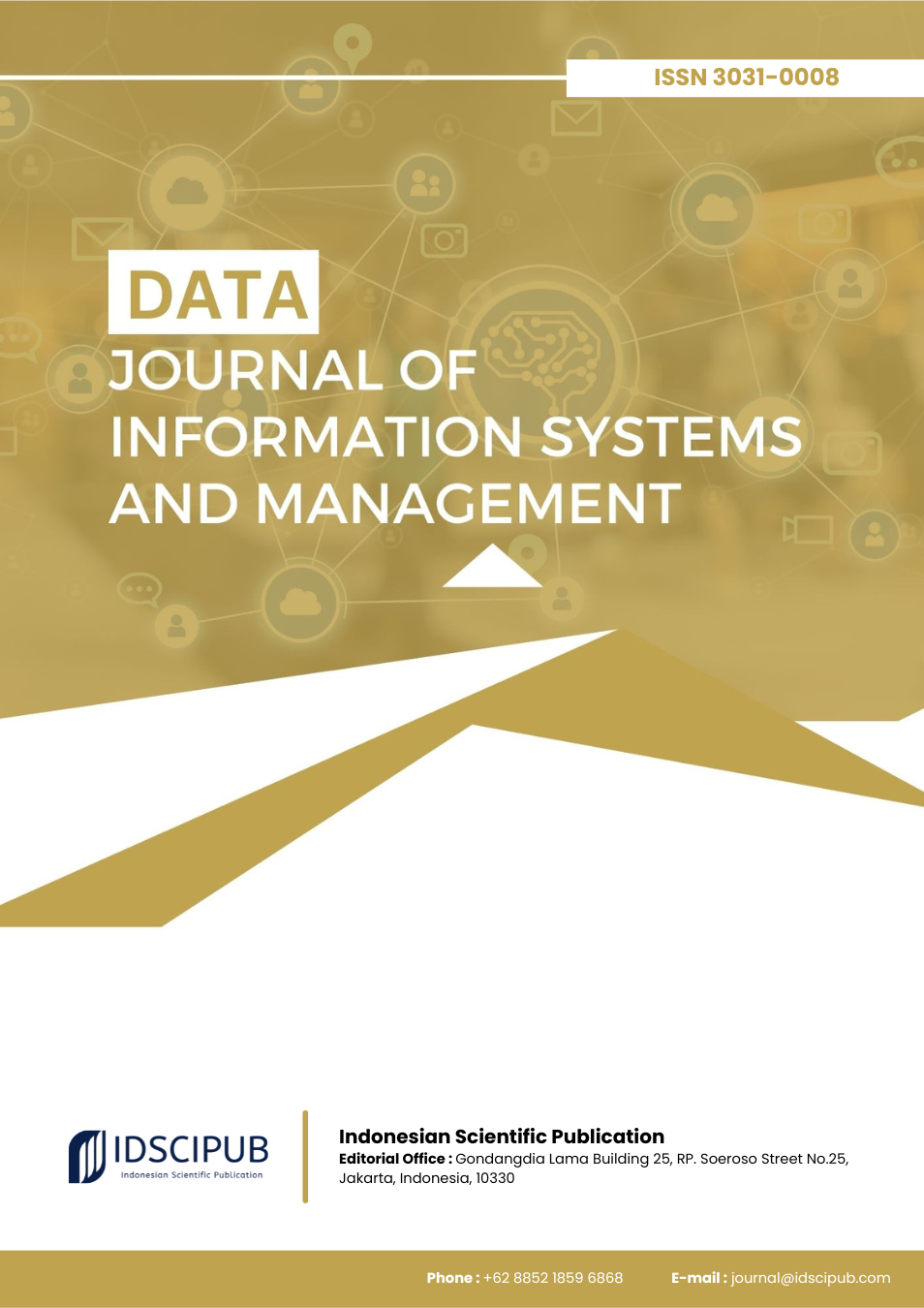Enhancing Enterprise Usability: Integrating Adaptive UI and Inclusive Design Strategies
DOI:
https://doi.org/10.61978/data.v3i1.732Keywords:
User-Centered Design, Enterprise Systems, Adaptive Interfaces, Inclusive UX Design, Usability Evaluation, Human-Computer Interaction, Digital Experience PlatformsAbstract
In the last five years, there has been a significant shift in how user interface (UI) and user experience (UX) design are approached within enterprise systems, reflecting the growing demand for more intuitive, adaptive, and inclusive solutions. This study employs a narrative review based on 1,500 initial records screened from Scopus, IEEE Xplore, ACM Digital Library, and Google Scholar (2019–2024). After rigorous selection, 82 empirical studies were included, focusing on user-centered design (UCD), adaptive interfaces, and inclusive practices in enterprise environments.. The review draws upon academic sources indexed in Scopus, IEEE Xplore, ACM Digital Library, and Google Scholar. Keywords including "Enterprise Systems," "User Experience," "Interface Design," and "Adaptive User Interfaces" were utilized to identify relevant literature, with inclusion criteria focusing on empirical studies from the last decade. Findings from 82 included studies show that UCD practices enhance usability and user satisfaction, with some reporting 20–30% higher usability scores and faster task completion rates when end-users are actively involved throughout development.. Adaptive interfaces employing machine learning have demonstrated potential to increase task efficiency and user engagement by personalizing content and layout. Moreover, inclusive design strategies, such as universal accessibility features and assistive technologies, contribute to improved user experiences across ability levels. However, systemic barriers like organizational resistance and limited training still hinder optimal implementation. The review highlights the need for strategic design interventions, ongoing usability assessments, and context-sensitive adaptations. As enterprise systems continue to evolve, future research must explore long-term effects of adaptive design and develop unified frameworks for inclusive, responsive interfaces. These efforts are vital to ensure equitable access and effectiveness of enterprise technologies across global and cross-sectoral contexts.
References
Bodziony, N., Jemioło, P., Kluza, K., & Ogiela, M. (2021). Blockchain-based address alias system. Journal of Theoretical and Applied Electronic Commerce Research, 16(5), 1280-1296. https://doi.org/10.3390/jtaer16050072 DOI: https://doi.org/10.3390/jtaer16050072
Černý, T., Donahoo, M., & Song, E. (2013). Towards effective adaptive user interfaces design., 373-380. https://doi.org/10.1145/2513228.2513278 DOI: https://doi.org/10.1145/2513228.2513278
Dakić, V., Morić, Z., Kapulica, A., & Regvart, D. (2024). Analysis of azure zero trust architecture implementation for mid-size organizations. Journal of Cybersecurity and Privacy, 5(1), 2. https://doi.org/10.3390/jcp5010002 DOI: https://doi.org/10.3390/jcp5010002
Engelmann, C. & Ametowobla, D. (2017). Advancing the integration of hospital IT. Applied Clinical Informatics, 08(02), 515-528. https://doi.org/10.4338/aci-2016-06-ra-0100 DOI: https://doi.org/10.4338/ACI-2016-06-RA-0100
Haase, P., Herzig, D., Kozlov, A., Nikolov, A., & Trame, J. (2019). Metaphactory: a platform for knowledge graph management. Semantic Web, 10(6), 1109-1125. https://doi.org/10.3233/sw-190360 DOI: https://doi.org/10.3233/SW-190360
Hüsson, D., Holland, A., & Sánchez, R. (2020). Intelligent personal assistant in business-context: key-feature evaluation for user acceptance. Business Systems Research Journal, 11(3), 147-166. https://doi.org/10.2478/bsrj-2020-0032 DOI: https://doi.org/10.2478/bsrj-2020-0032
Jwo, J., Lin, C., & Lee, C. (2021). An interactive dashboard using a virtual assistant for visualizing smart manufacturing. Mobile Information Systems, 2021, 1-9. https://doi.org/10.1155/2021/5578239 DOI: https://doi.org/10.1155/2021/5578239
Kirkpatrick, J., Light, K., Walker, R., Georgas, D., Antoine, P., Clough, R., … & Willett, C. (2013). Implementing and integrating a clinically driven electronic medical record for radiation oncology in a large medical enterprise. Frontiers in Oncology, 3. https://doi.org/10.3389/fonc.2013.00069 DOI: https://doi.org/10.3389/fonc.2013.00069
Lopata, A., Gudonienė, D., Butleris, R., Veitaitė, I., Rudžionis, V., & Gudas, S. (2024). A multidimensional financial data model for user interface with process mining systems. Electronics, 13(21), 4304. https://doi.org/10.3390/electronics13214304 DOI: https://doi.org/10.3390/electronics13214304
Sekar, B. (2017). Enterprise software experience design: journey and lessons., 356-359. https://doi.org/10.1007/978-3-319-68059-0_29 DOI: https://doi.org/10.1007/978-3-319-68059-0_29
Sellami, S. & Zarour, N. (2022). Keyword-based faceted search interface for knowledge graph construction and exploration. International Journal of Web Information Systems, 18(5/6), 453-486. https://doi.org/10.1108/ijwis-02-2022-0037 DOI: https://doi.org/10.1108/IJWIS-02-2022-0037
Toribio, G., Saldaña, Y., Mora, J., Hernández, M., Bautista, H., Collazos, C., … & Alegría, J. (2019). Medición de la usabilidad del diseño de interfaz de usuario con el método de evaluación heurística: dos casos de estudio. Revista Colombiana De Computación, 20(1), 23-40. https://doi.org/10.29375/25392115.3605 DOI: https://doi.org/10.29375/25392115.3605
Wang, K. & Barhorst-Cates, E. (2023). Enhancing usability through cross-enterprise design standards: the luxce model. Proceedings of the Human Factors and Ergonomics Society Annual Meeting, 67(1), 1712-1715. https://doi.org/10.1177/21695067231192570 DOI: https://doi.org/10.1177/21695067231192570






